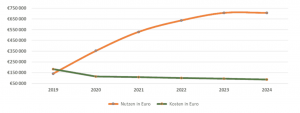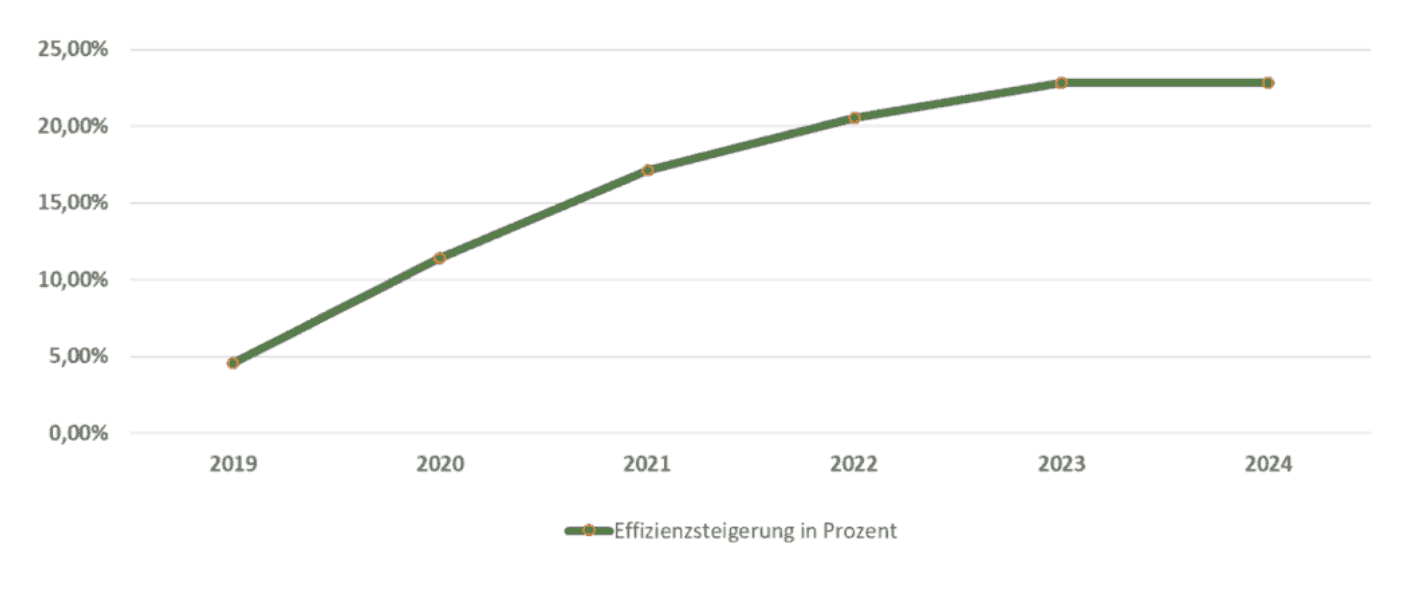Different digitisation measures compete within a company. Decision makers prefer to approve projects and budgets on a data basis. But how can the Return on Investment (ROI) of a Field Service Management solution be calculated? We have summarized all influencing factors for you and provide you with concrete figures so that you can convincingly present your business case to the board of directors.
The advantages of Field Service Management solutions
An FSM software enables more efficient service processes. Your service technicians can access knowledge databases directly at the customer’s site and document their work. This enables the technical field service to better carry out its repair and maintenance activities. Additional data can be collected effortlessly and without errors. Many administrative activities such as time recording are automated by the use of software. The coordinators gain a better overview of their service teams’ assignments and can effectively control the processing of service requests.
But it is not only the service organization that benefits from a Field Service Management solution. Industry 4.0 means that data is networked across departments. Data analysts can use a data-driven service department to draw important conclusions about machine optimization and sales activities.
Calculate ROI of Field Service Management
A digital service department is more efficient. But how do the investments relate to the actual cost savings? What other expenses are involved in software implementation besides the license fees?
Workheld has developed a method in cooperation with the Institute for Production Management of the Vienna University of Economics and Business Administration to calculate the ROI of Field Service Management solutions. Theory and practical knowledge from numerous software implementations have been combined.
Here is an extract of influencing factors from the calculation model:
- The introduction of Field Service Management software requires strategic consulting and professional project management.
- There may be technical follow-up projects due to third-party integrations. At the same time, there are no costs for legacy systems, which are replaced by a modern FSM solution.
- Costs may arise for the preparation of knowledge materials.
- Service technicians must be equipped with tablets, which falls under the category of hardware costs.
- The training effort is not only a cost factor, but also decides on the software acceptance and thus whether the goals of modern Field Service Management in the own organisation are achieved at all.
- Process optimisations are calculated on the basis of average personnel costs.
Practical example: FSM introduction in a medium-sized company
Here you can see a calculation example for a medium-sized company with 67 employees in mechanical engineering. Taking all influencing factors into account, the following picture emerges:


The development of costs and benefits
- In the first year, the expenditure amounts to 180,000 to 200,000 euros. The costs for strategy consulting, project management and tablets are included.
- In the second year after implementation, the costs fall to around 90,000 euros and remain relatively constant at this level for several years.
- We assume that after three to five years the expenses will decrease again significantly, as the software becomes an established part of core processes and training is no longer required. The investments in terminal equipment for the further rollout of FSM will be completed by that time. After a steep learning curve, no more costs for technical extensions are expected in the same intensity as in the first years after implementation.
- Already a few weeks after the software implementation, the potential benefits of FSM outweigh the costs. It will take a while before the entire service organisation has accepted the new processes well, but the break-even point is reached during the first year. Up to 350,000 euros can be saved in the first year through process optimization and automation.
- Benefits increase to half a million euros in the second year, and show great potential for cost savings in the third and fourth year after implementation.
- The efficiency of service processes increases by 5% in the first year. After five years, the service organization is almost 25% more efficient than before using a Field Service Management solution.
You also want to know which costs you could save by using Workheld? Contact us now – we will be happy to calculate your cost savings through Workheld.
